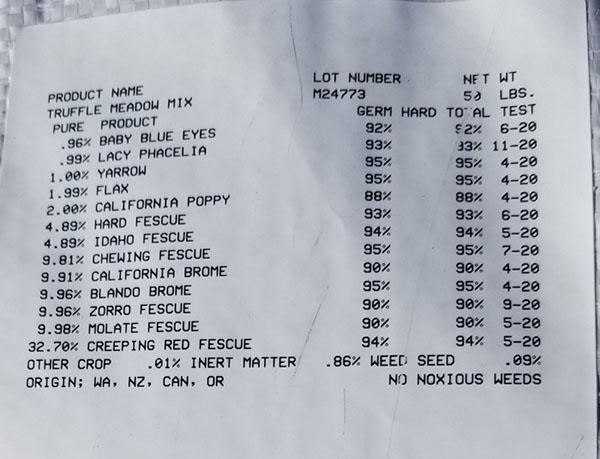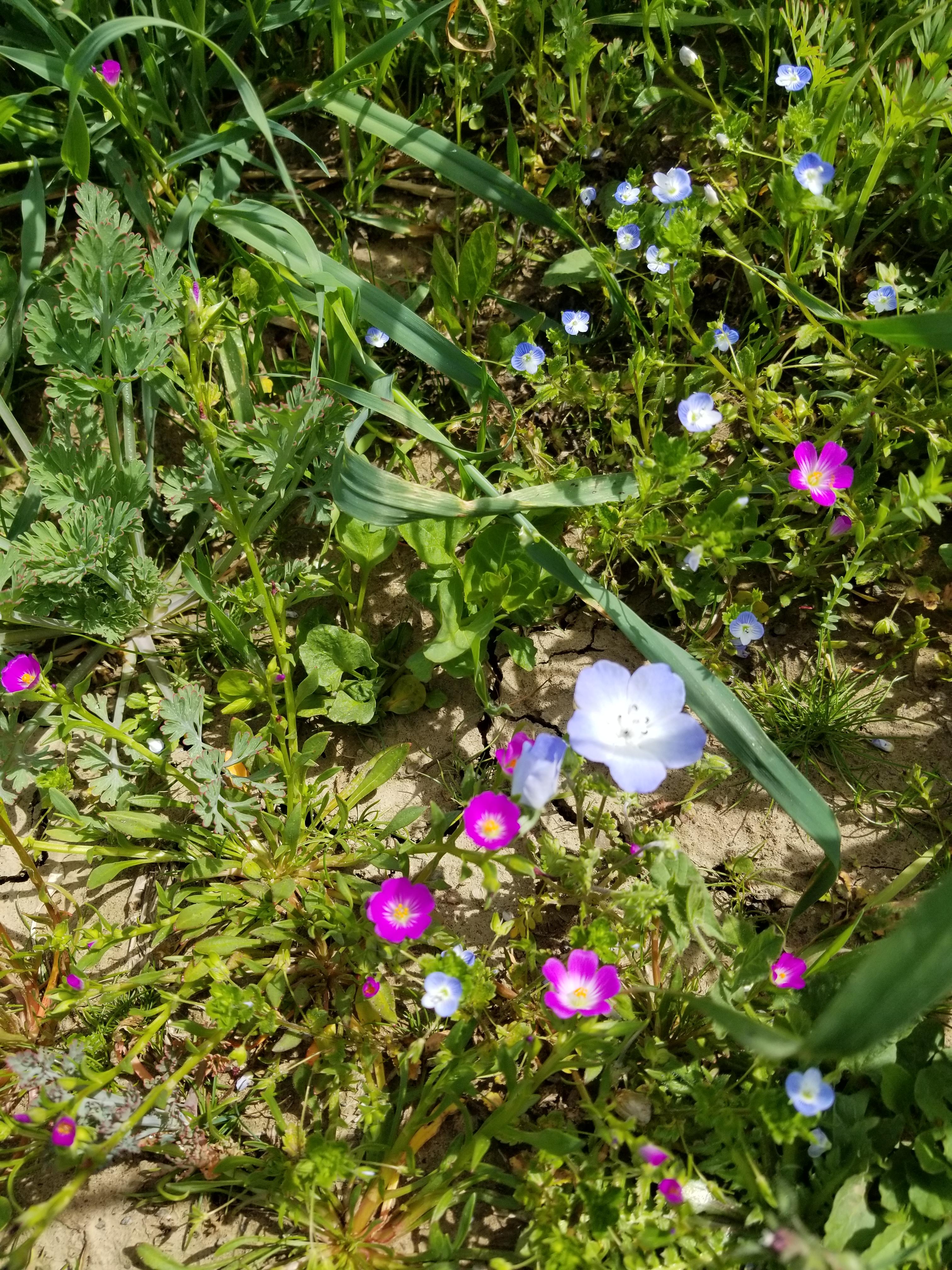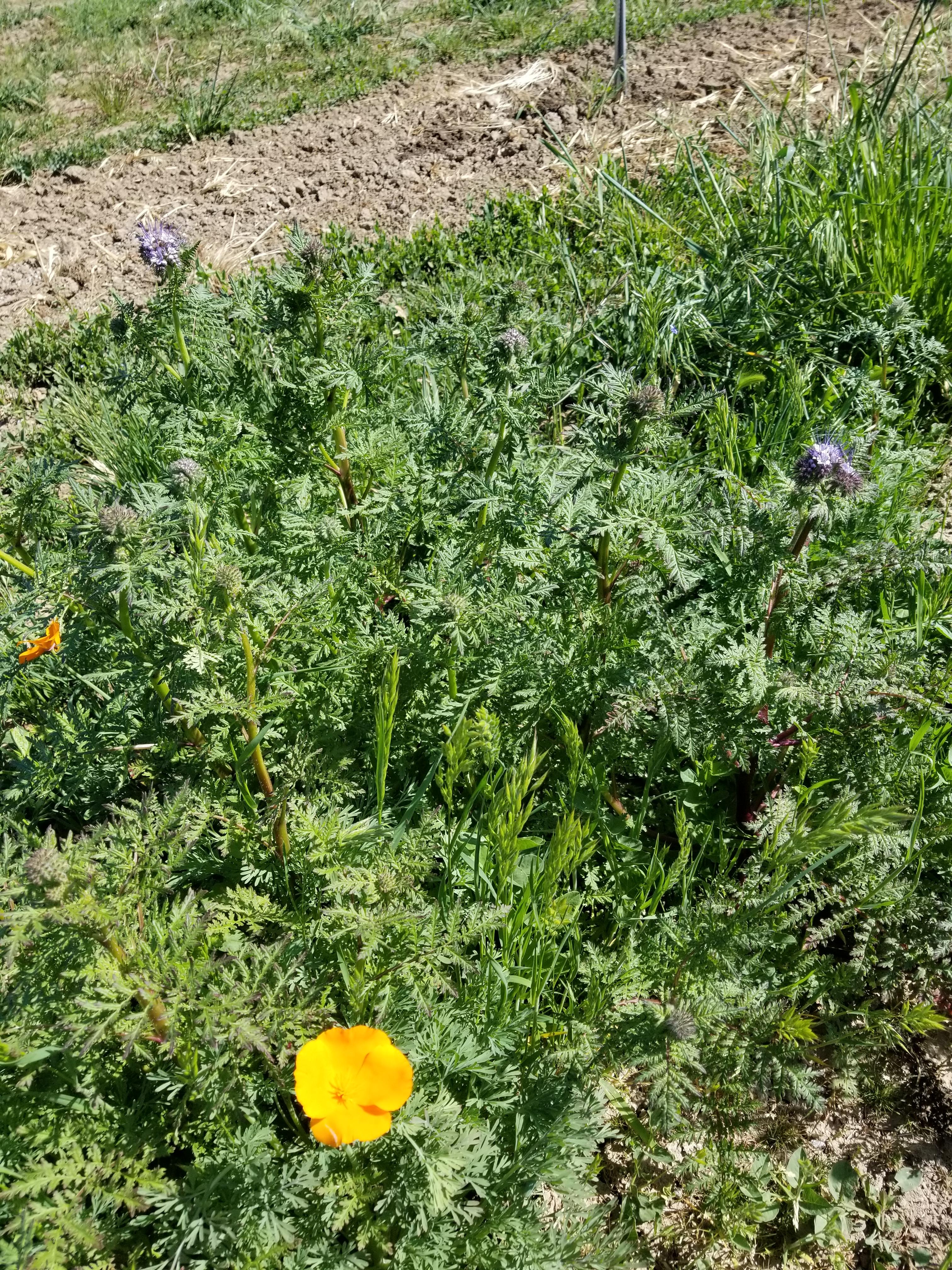
Orchard grass
Does anyone have any recommendations for the best orchard grass? I've just planted 1000 trees on some sloping ground and need to determine what grass is going to be the […]
Home › Forums › Cultivating Truffles › Orchard grass
Tagged: cover crop, grass, orchard maintenance
- This topic has 14 replies, 5 voices, and was last updated 3 years, 4 months ago by
Kathleen Sedehi.
-
AuthorPosts
-
-
May 24, 2021 at 4:59 pm #5177
Does anyone have any recommendations for the best orchard grass? I’ve just planted 1000 trees on some sloping ground and need to determine what grass is going to be the least invasive when it comes time to harvest. I’ve considered annual grasses that are typically used for feed, but I’m not sure that will work. Your thoughts are appreciated.
-
October 6, 2022 at 2:23 am #8901::
I am a believer in the establishment of an ecosystem and the cover crop is a big part of it as it supports a whole world of organisms in the soil and in the orchard. I believe that such system will be more resilient and less inclined to major pest invasion. I am maybe naive, only time will tell.
This is why in our orchard we favore regenerative practices and we have never used any herbicides or pesticides. We try to promote the growth of beneficial organisms control the other less beneficial.
-
October 6, 2022 at 1:00 pm #8903::
Hi Stephanie, Hoping your getting moss development now you have irrigation which will help with the erosion and negate the need for grass.
My last thoughts on the subject as I am trying to provide a balance regarding grass in orchards from a standard management position.
I understand that Fabrice is trying for a biodiverse orchard (thanks for clarifying Fabrice. I think it’s important that folk understand the methodology behind the comments) I hope it works for him and I’ll be interested to see the journey that they are on because I really really want to see them succeed. However I don’t think introducing a ground cover without consideration that it will need to be reduced as the orchard ages has been recognized and should be taken into account in the discussion. If you disturb the soil (assuming Perigord) outside of March April you are hurting not helping.
Also, I know it is slightly off topic but everyone should download https://www.agric.wa.gov.au/new-horticulture-crops/australian-truffle-orchard-integrated-pest-and-disease-management
It highlights a lot of things we can expect (the North American version of) in our orchards. The majority of them love ground cover for breeding and protection.
I’ll leave it at that.
PS: I just got back two days ago from visiting Manjimup and spending time on orchards with growers. If you don’t know they are extremely successful typically produce 1-2lbs of truffle per tree. Not one orchard had grass and they were pulling every truffle even though it was out of season to try and break the beetle cycle. They do everything possible to ensure a mono-crop in the orchard while maintaining bio-diversity around the rest of the property.
-
-
September 2, 2021 at 12:41 pm #5687::
Have you decided what you are doing with flowers in your cover crop?
I’m going to plant a cover crop this fall and am interested in adding flowers to the mix. I want to understand if I should or SHOULD NOT include nitrogen fixing plants in the orchard.
I’d love to learn from what you have learned. I had the conservationist from NRCS out and she concluded that a cover of creeping red fescue would be an advantage as when it goes dormant in the winter it gets quite sparse which makes for lots of room for digging truffle. I just want to mix in some flowers for the beneficial insects and diversification of species in the field.
Any input is appreciated.
-
September 2, 2021 at 12:41 pm #5688::
Hi Elise. Where are you located? I’m in Oregon and I contacted my local NRCS office to ask for guidance. The conservationist was super interested in my project, did a bunch of research, and ended up suggesting creeping red fescue as it grows nicely in our climate, I can mow it or roll it down two to three times a year, and in the winter it gets very sparse which makes for terrific truffle digging! Have you contacted your county resources to discuss this with them and what would be best for your goals in your location? I was so pleased at their responsiveness.
-
September 2, 2021 at 2:22 pm #5695::
I did plant this mixture last year with various success.

It looks like the grasses did not like it much… The most successful flowers were the Lacy Phacelia and the California Poppy. All the other flowers appeared only anecdotally. To note, this might be a totally different observation next year as some of those plants are biennials or perennials.
The problem with flowers is that they are very expensive, so you will have to hit a compromise. To try to save in cost we have chosen to promote self reseeding. We did is to not mow the center of the lanes until the end of June to give a chance for the cover crop to go to seed.
The challenge with that approach is that it got quite wildly and at the end we were concerned with exposure to wildfires. Toward the end it was also getting hard to work out gopher activity as the growth (including the local volunteer) was over 4′ tall.
The advantage is that it saved us at least two mowing of these areas which resulted in less compaction, less labor and less gas. We have noticed a significant (not measured) increase in bird population and we were very happy to see the multitude of pollinators.
The success of your seed mix is directly correlated with your soil. As you know we have a wide variety of soil type in our orchard and we have witnessed a very diverse plant populations throughout. Going from spots with zero germination to some areas that looked like hundreds of plants were thriving.
As for the question regarding the nitrogen fixing plants I have received mixed feedback. Ground cover is used in “standard” farming to replenish the soil nitrogen level and other nutrients, so to promote better successive crops. My understanding of the use of cover crop in a truffier is different.
We have decided to not include Nitrogen fixing plants, but I don’t have a solid argument for or against. I have read that it could be detrimental for truffle growth if the soil is well irrigated and too rich. There is a THEORY that stipulate that the trees tolerate the “truffle tax” on their sugar because the trees needs the truffle to absorb nutrients and water from the soil and if the soil is too rich then the tree can thrive without the help of the truffles and thus would reject the truffle. However there are other papers showing the importance of soil nutrients in the successful mycorrhiza development. Which throws away the first argument.
Some have argued that the cover crop may even compete with the trees, however I believe that our cultivation practices mitigate that risk. We are growing truffles, not trees. We have seeded the cover crop in the middle of the rows only and 4 feet away from the trees (at least while they are young, later on the brule will take care of this). Because the cover crop is mulched back in place we are not depleting the soil of nutrients and in effect we are increasing the amount of organic matter in the soil and improving carbon fixation.
In the end I have decided to use cover crops for these reasons: Increase biodiversity in the orchard, protect the soil from erosion and direct exposure to the sun, limit compaction of the soil. The increased biodiversity will promote the development of a more resilient and balanced orchard which should result in being more productive. The protection of the soil from the elements will help with the development of the biodiversity all the way to the top soil where the truffles grow. Compaction will be mitigated by both shielding the top soil from the droplets and the roots working the soil texture (this is why it is important to choose species based on their root system as well).
For this year we may decide to adjust the mixture but we will certainly do another round of seeding.

Early spring sparsed germination

A more dense germination

Later on in the season

Cover crop in the middle of the rows and soil cultivated in the tree line
-
February 1, 2022 at 8:51 pm #7680::
BTW, I contacted my local NRCS office to get help choosing the grass for the cover crop. The conservation officer came out for a field trip. After researching, she recommended I use creeping red fescue because it gets sparse in winter which therefore might make it easier to dig for truffle. All a guess but an educated one. I planted this seed last fall. It is starting to come in. I also mixed in a small amount of flower seed – YES, flowers are expensive. Many times more expensive than the grass seed. Will let you know what happens this growing season.
-
February 14, 2022 at 6:59 pm #7800
-
-
February 14, 2022 at 6:58 pm #7798
-
February 22, 2022 at 4:07 pm #7866::
I planted just straight grass seed, creeping red fescue, and sprinkled a flower mix in as a little sugar. Not much. https://silverfallsseed.com/product/short-creek-mix/ is the flower seed mix I added. Nice local provider here in Williamette Valley. I was able to drive to the producer to pick it up.
I’m considering getting a crimper/roller to roll down the orchard after it has gone to seed. Have you don’t anything like that?
-
June 29, 2022 at 2:23 pm #8415::
We don’t do any cover crops as we are following an Australian methodology. If you have a cover crop you are going to have to provide additional irrigation for it (It will also compete for root zones against the trees feeder roots). Secondly we are growing truffle and having to dig through a cover crop is time consuming.
-
October 5, 2022 at 2:32 am #8885
-
October 5, 2022 at 7:59 am #8889
-
-
October 5, 2022 at 3:54 pm #8896::
Hi All,
My few additional thoughts for consideration.
Fabrice is correct, we are trying to grow truffle. However in order to do so, you’re trying to grow a tree with a dependence on a mycorrhizae, why are you introducing grass with competitors for the bound nutrients? This weakens the relationship.
If you are using a replenishing fertilizer such as truffle boost or Seasol for trace nutrients, you don’t always get a burn around the trees to control the grass as these are not getting depleated. We have a bunch of producing trees that we have to do grass control around. We have very few actual trees showing a burn and those are not our big producers.
Have you ever tried to dig truffle out of a grass root situation, yet alone 20+ in a morning?
I understand wanting a cover crop for the first few years, but by year 5 or 6 they are going to be a problem. It takes 3 years + to control the weeds / grass once you let it go to seed. We strip sprayed 3′ from the trees extending it to year 10 where you don’t need any cover.
Slugs – Why give them a home? The number one reason folk don’t have truffle is slugs and any cover crop doesn’t help the situation. Ask a grass seed grower in Oregon how much sluggo they go through in a year:).
-
October 6, 2022 at 12:34 am #8899::
This is great feedback. Thank you! The orchard is on a hill and the county is requiring use of cover crops to reduce soil erosion (is anyone really checking?). Plus the current weed situation is just a mess. I have spent the past 6 months rehabilitating this orchard, getting the irrigation system streamlined (another topic entirely), mowing , hand pulling weeds, weed eating and spraying this orchard has been a CHORE to say the least. I guess more tilling and spraying instead of a better weed situation is what you are suggesting? Thanks fellas!
-
-
AuthorPosts
- You must be logged in to reply to this topic.